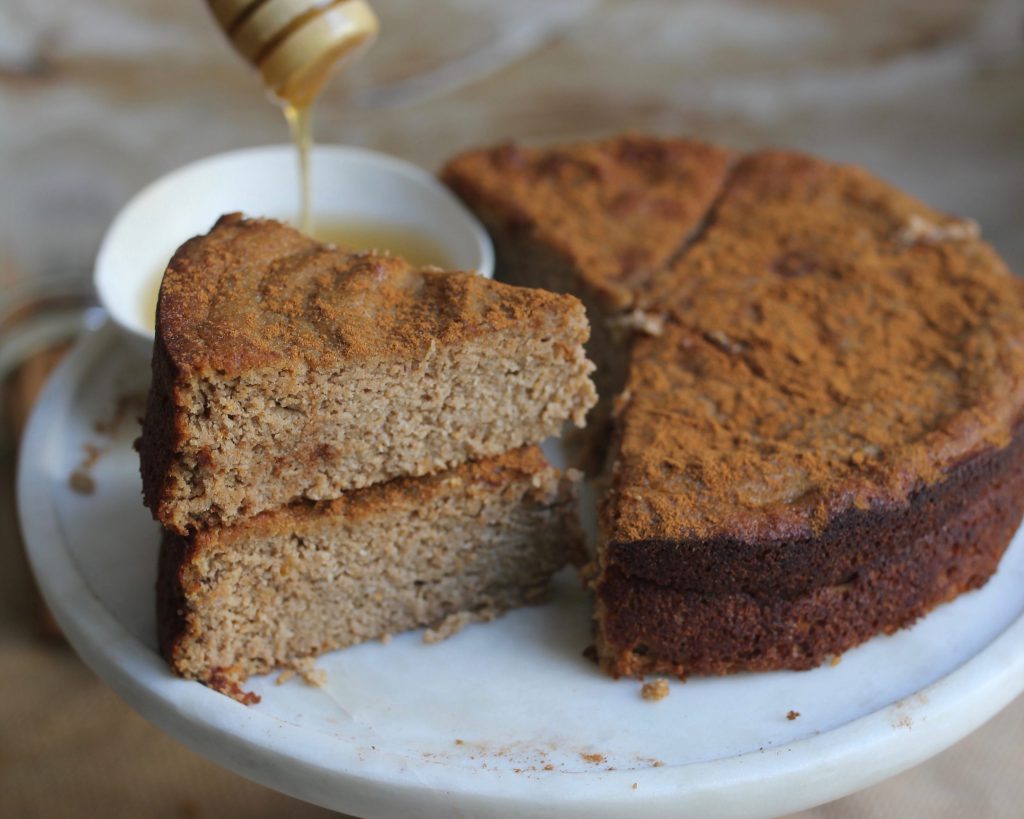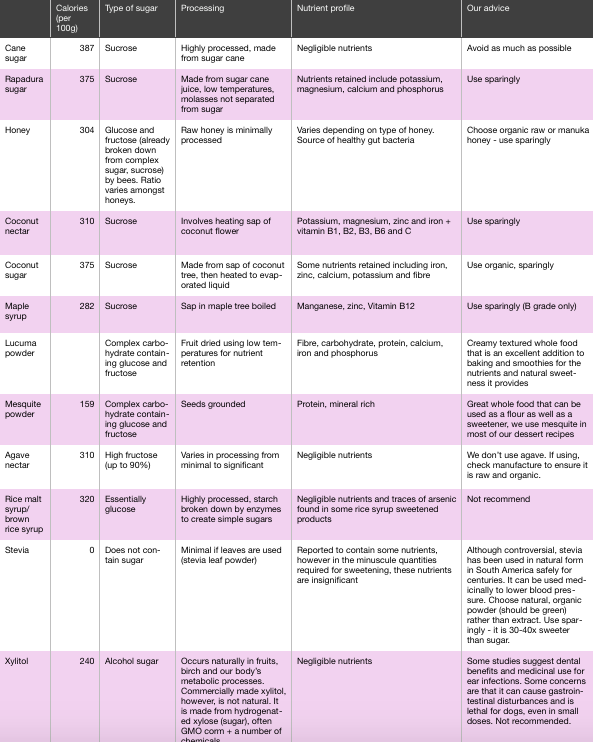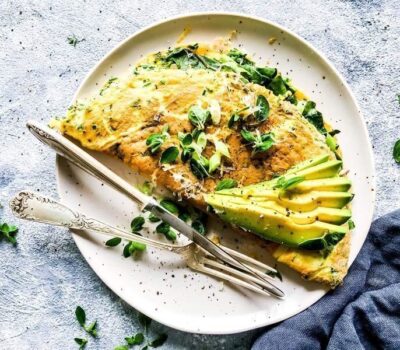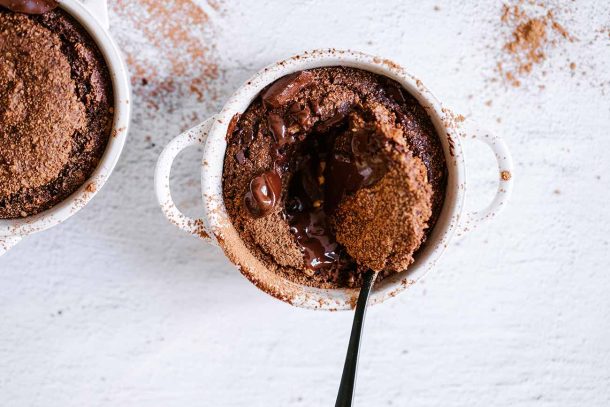Sugar in its many forms is now widely considered to be detrimental to health, especially in the quantities in which it is being consumed today. Researching sugars, however, is a minefield. Information can be confusing, conflicting and often inaccurate. There are all sorts of claims being made about good and bad sugars and customers’ increasing awareness has led to a flood of new sweeteners onto the market, many claiming to be the ‘healthi(er/est) alternative’. Not that you would know for sure, because of a lack of proper research – that is, research not done by someone with a vested interest.
Digging under the marketing claims can be challenging, so we’d like to share with you what we know about sugars and natural sweeteners, based on current information. We’ve summarised the info on a long list of different sugars into a reference table, which you’ll see later in the article. It is not intended to be definitive, as there are, of course, many more sweeteners, and more emerging all the time as awareness builds around the dangers of excess sugar consumption. Use the following information to inform your buying choices and remember there is no ‘one size fits all’ formula to choosing the best sugar for you.
When trying to get your head around sugar, the main factors to consider are processing, nutrients retained, type of sugar, glycaemic index and, most importantly, quantities used.
Three main types of sugar
- Glucose (monosaccharide): Metabolised in all cells and converted to energy. Requires insulin for transport into cells
- Fructose (monosaccharide): Metabolised in the liver. Does not require insulin for metabolisation
- Sucrose (disaccharide) = 50% glucose + 50% fructose

Glycaemic Index (GI)
GI is a scale from 0 to 100 that reflects fluctuations in blood glucose after consuming particular foods. A high GI food causes a spike in blood glucose, triggering insulin release by the pancreas. Conversely, low GI foods raise blood glucose more slowly and to a lesser extent, generally due to slower digestion of food.
Fructose does not raise blood glucose (and insulin) excessively (therefore GI is low) and this can mislead people into thinking that fructose based sweeteners are the healthier choice. However, overloading the body with fructose, which is processed by the liver, is very much implicated in metabolic disturbances, the obesity epidemic and other chronic health conditions. The main types of fructose to avoid are those which are highly processed and devoid of other nutrients, for example high fructose corn syrup (HFCS). HFCS is now the predominant sugar in soft drink and many processed foods as it is less expensive than cane sugar. Fruit also contains fructose in varying degrees, however also contain many nutrients, anti-oxidants and fibre, to help the body metabolise the fructose (although fruit should also not be eaten in excess).

Glycaemic Load (GL)
Also less understood is the concept of ‘GL’, meaning Glycaemic Load. This is considered by some to be a more relevant measure than GI as other factors are taken into consideration, such as the quality and quantity of carbohydrates in the particular food. The value is derived by a mathematical calculation, multiplying GI by grams carbohydrate content and dividing by 100.
Not taken into account by these numerical values are other factors such as fibre, healthy fats, protein and particular phytonutrients in certain whole foods that may improve blood sugar regulation. Still there are many variables, the GI and GL can change dramatically within the same food group depending on such considerations as species, ripeness and processing. To further complicate matters, there is not always consensus on GI assigned to foods.

Quantity of use
Even our sweeteners of choice we use sparingly. Remember it is still sugar. We are delighted that our recipes have been well received, although occasionally people comment that some desserts could be sweeter. We welcome all feedback and recognise that, as a western society, we have become accustomed to sweeter foods. However, palates can become less desirous of sweetness and can adjust, in a similar way to weaning off sugar in tea and coffee. A similar strategy could be adopted when it comes to desserts, that is beginning with more sugar in recipes and gradually reducing the amount.
Artificial sweeteners
We haven’t covered chemically produced artificial sweeteners such as aspartame, saccharine and sucrolose here (except for xylitol as it is marketed as ‘natural’), suffice to say that we consider them, despite the absence of calories, to be in the most dangerous category and we recommend avoiding them completely and checking to see when they have been added to foods you eat. They will certainly be in most ‘diet’ foods. It is also advisable to check small print labelling to make sure that sugar you are purchasing is not mixed with another type of sugar.

* Information and studies on coconut nectar and sugar are scare and there are some concerns around sustainability as coconuts cannot be grown once flowers are used to create sugar and nectar. We will update this information as it becomes available.
For more information on sugars, read our article How did so much sugar end up in our food?







